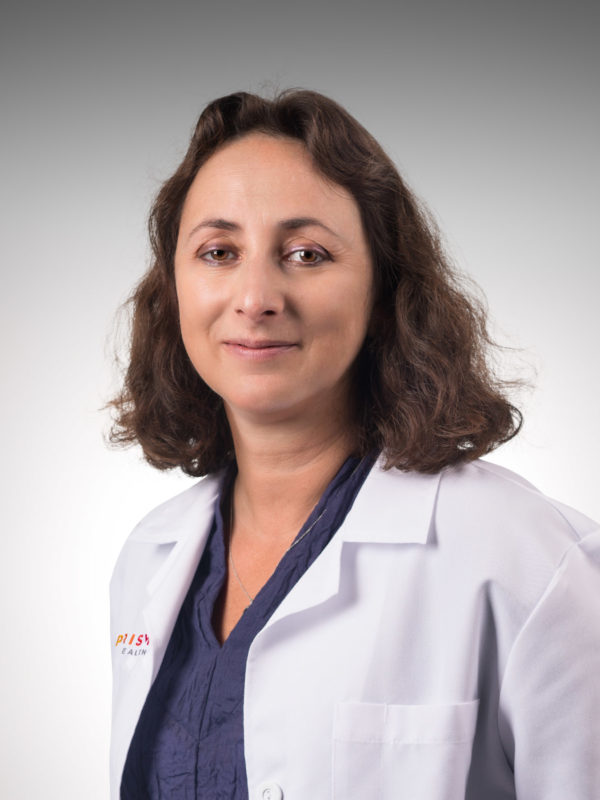What is nonalcoholic fatty liver disease?
Nonalcoholic fatty liver disease (NAFLD) refers to a range of liver conditions affecting people who drink little to no alcohol but whose livers look like they belong to an alcoholic. Pediatric gastroenterologist Yulia Rekhtman, MD, explained more about this condition that affects 25% of Americans, including 10% of children.
Transcript
Caitlin Whyte: Nonalcoholic fatty liver disease or NAFLD refers to a range of liver conditions affecting people who drink little to no alcohol, but whose livers looks like one of alcoholics. Here to tell us more is Dr. Yuliya Rekhtman, an Associate Professor and Division Director of Pediatric Gastroenterology and Nutrition at Prisma Health Children’s Hospital in Columbia, South Carolina.
This is Flourish, a podcast brought to you by Prisma Health. I’m Caitlin Whyte. Well, welcome, doctor, what is nonalcoholic fatty liver disease?
Yuliya Rekhtman, M.D.: So NAFLD or nonalcoholic fatty liver disease refers to the range of liver conditions affecting people who either drink alcohol or not, but who have fat in the liver. And then damage is very similar to the damage that alcohol does to the liver.
Caitlin Whyte: And just how common is it?
Yuliya Rekhtman, M.D.: It is becoming more and more common. And at this point in the United state, it is the most common form of chronic liver disease, affecting about 25% of the population in the country.
Caitlin Whyte: Oh my gosh. Wow. And how serious is non-alcoholic fatty liver disease?
Yuliya Rekhtman, M.D.: It is serious because it can progress to actual hepatitis or inflammation of the liver, which makes the liver non-functional and it also can progress to advanced scarring and liver failure. Between 5% and 10% of patients who have NAFLD will develop NASH or steatohepatitis.
Caitlin Whyte: You touched a bit on this earlier, but who gets it? Who is at risk?
Yuliya Rekhtman, M.D.: Majority of patients are actually young adults and children because their metabolism is not mature enough. So between the ages of two and 19, 10% of children will have NAFLD.
Caitlin Whyte: Wow. Now tell us a bit more about the causes.
Yuliya Rekhtman, M.D.: The causes are mostly change in our diet, that’s a Western diet disease. Patients with obesity, increased body mass index or BMI, patients who have insulin resistance, high blood sugar, prediabetes, so diabetes. Those are the patients who are at the higher risk. And as you know, there’s epidemic of obesity in children in this country. Therefore, majority of these patients will have some degree of fat accumulation in the liver causing potential damage.
Caitlin Whyte: And are there any symptoms we can look out for?
Yuliya Rekhtman, M.D.: Unfortunately, this is an insidious disease, meaning that by the time there’s symptoms, you can see the liver’s already severely damaged. So for many years, we might not even see anything. Physicians can check for so-called liver function tests and they might be elevated. But more common than not, there’s no symptoms that you can delineate for those patients.
Caitlin Whyte: Well, since this is so insidious, like you said, how do you test for it?
Yuliya Rekhtman, M.D.: You can do the sonogram and the sonogram is very sensitive to the fat in the body. So it’s actually really easy to see if there is a fat in the liver. So this is one of the most common tests we apply. We also can check for liver function test in the blood. And at the same time, we can do cholesterol level and triglycerides level and check for insulin resistance. So the risk factors that we mentioned before, the ones that we can test on the blood. There’s also several new tests that are coming on the market that are noninvasive called FibroScan that measures the elasticity of the liver, whether the liver is actually having scar tissue or fibrosis.
And in addition, we don’t use it as much anymore, but we can do a liver biopsy and actually take a piece of tissue and look under the microscope and quantify how much fat and how much damage the organ has.
Caitlin Whyte: And once diagnosed, what are some of the treatment options?
Yuliya Rekhtman, M.D.: The best therapy is lifestyle and dietary changes. There is no cure for this. Multiple studies have been shown that as long as you continue diet and exercise, you can delay the onset of hepatitis or actual liver disease. However, if you don’t continue diet and exercise, it comes right back. So it’s kind of a lifetime change that needs to be accepted by the participants and by the family, because obviously it’s a big change.
Some people will use vitamin E because it’s an antioxidant. Patients who have pre-diabetes or metabolic syndrome can go on medication called metformin. It’s another medicine that people use, but none of the medications showed significant improvement in hepatitis.
Caitlin Whyte: So what should someone do if they would like to be tested or have their child tested?
Yuliya Rekhtman, M.D.: You can see your pediatrician if you’re worried about fatty liver disease. And your pediatrician is equipped to order the sonogram and liver function tests can be done in any office. If the disease is progressive, if a pediatrician is worried, he can certainly refer to pediatric GI office in upstate Midlands and we’re very well equipped to take care of those patients. We also have a dietitian that can help with the diet.
Caitlin Whyte: Great. Well, doctor, anything else you’d like to add to this conversation?
Yuliya Rekhtman, M.D.: I just want to say that it is such an insidious disease, and it actually affects a lot of children that I want the parents to be aware of that and start babies on the healthy diet early. So there is a chance of healthy living and the prevention of that disease, because once you have it, you can’t get rid of it.
Caitlin Whyte: Well, thank you so much for providing this information today, doctor. That was Dr. Yuliya Rekhtman, an Associate Professor and the Division Director of Pediatric Gastroenterology and Nutrition at Prisma Health Children’s Hospital in Columbia, South Carolina. For more information, head on over to PrismaHealth.org/Flourish.
This has been Flourish, a podcast brought to you by Prisma Health. I’m Caitlin Whyte. Stay well.
Read MoreFind a doctor
Whether you’re looking for a primary care physician or need to see a specialist, we’re here to help with experienced, compassionate care near you.
Find a Doctor

